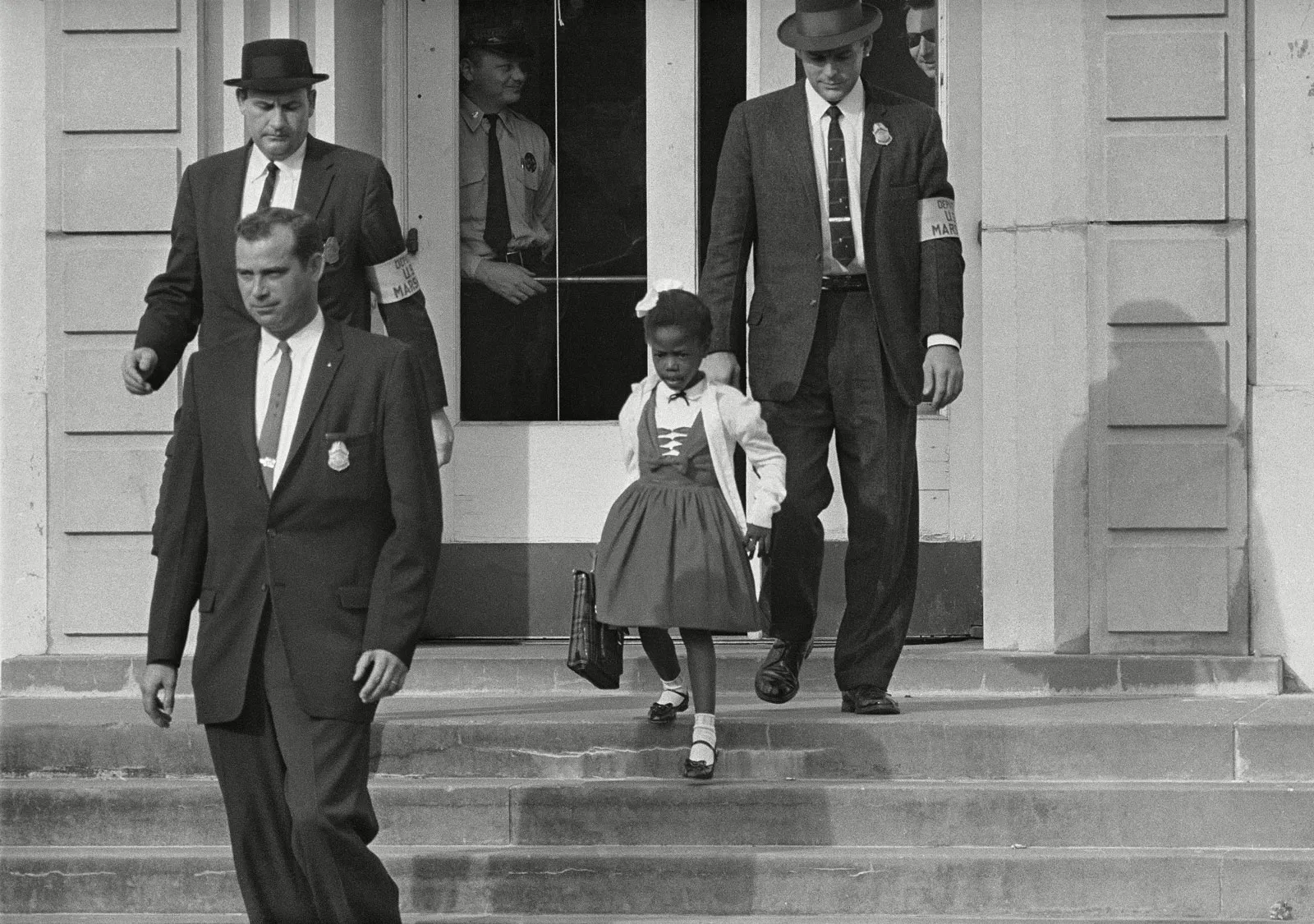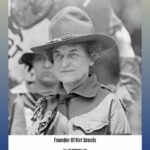Ruby Bridges: A Timeline of Courage
Ruby Bridges’ story isn’t just about a little girl going to school; it’s a powerful testament to the courage of a child facing the immense challenges of racial segregation in America. Imagine being six years old and thrust into the center of a storm of social change. That was Ruby’s life.
Born into a Divided World (1954)
In 1954, the same year Ruby was born, the Supreme Court issued its landmark ruling in Brown v. Board of Education, declaring segregation in public schools unconstitutional. This victory for equality was just the beginning of a long and arduous journey. Changing deeply ingrained societal beliefs and practices would prove to be much more difficult than anyone could have imagined.
A Test and a Courageous Decision (1960)
In 1960, Ruby’s parents faced an impossible decision. They knew that sending their daughter to an all-white school would thrust her into a volatile and potentially dangerous situation. But they also believed in her right to a quality education, regardless of her race. Ruby took a test and was one of only a few Black children selected to attend William Frantz Elementary School, a previously all-white institution. Sadly, fear and prejudice prevented the other children from attending, leaving Ruby to face this challenge alone.
A Day Etched in History (November 14, 1960)
Picture this: a six-year-old girl, dwarfed by towering U.S. Marshals, bravely walking past crowds of angry protesters, her small hand held tightly by her mother. This was Ruby’s first day at William Frantz Elementary School. It was a pivotal moment in the fight for civil rights, forever etched in history books. But for Ruby, it was a terrifying experience.
A Year of Resilience (1960-1961)
For an entire school year, Ruby essentially attended school alone. Most white parents kept their children home, refusing to let them share a classroom with a Black child. Imagine the profound loneliness and feeling of isolation she must have endured. Yet, Ruby persevered, attending school day after day. Her teacher, Mrs. Barbara Henry, recognized her not as a symbol, but as a student eager to learn. Mrs. Henry became Ruby’s safe haven, providing unwavering support and guidance.
Seeds of Change and a Powerful Image (1964)
Slowly, change began to take root. A few courageous families sent their children back to William Frantz, allowing them to learn alongside Ruby. The school, once a battleground, began to slowly reflect the diversity it should have embraced all along. Then, in 1964, Norman Rockwell’s iconic painting, “The Problem We All Live With,” thrust Ruby into the national spotlight. The image of her, resolute and determined, walking to school with those U.S. Marshals, became an enduring symbol of the struggle for racial equality.
A Legacy of Inspiration (1999-Present)
Ruby’s story, however, did not end there. She became an advocate for tolerance and understanding, founding The Ruby Bridges Foundation in 1999 to continue the fight for equal opportunities in education. Today, Ruby Bridges is more than just a name in a history book. She stands as a testament to the power of one person, especially a child, to make a difference in the world. Her courage, resilience, and unwavering spirit continue to inspire people around the globe to fight for a fairer and more just society.
Ruby Bridges in 1995: Championing Educational Equity
While 1960 marked Ruby Bridges’ entrance into history, 1995 signified a crucial turning point in her life. This was the year she transitioned from a symbol of desegregation to an active advocate for educational justice.
The Ruby Bridges Foundation: A Catalyst for Change
The establishment of The Ruby Bridges Foundation in 1995 solidified Bridges’ commitment to creating lasting change within the education system. The foundation works to promote tolerance, respect, and communication in classrooms across America, striving to dismantle the barriers of racial inequality that persist within the education system.
Bringing History to Life: The Children’s Museum Exhibit
In a powerful move to educate younger generations, The Children’s Museum of Indianapolis unveiled an exhibit in 1995 that recreated Ruby Bridges’ first-grade classroom. This immersive experience allowed children to step back in time and gain a tangible understanding of Bridges’ journey, fostering empathy and understanding.
Four Pivotal Moments in the Life of Ruby Bridges
Ruby Bridges’ life wasn’t defined by a single act of courage, but rather by a series of events that shaped her into a civil rights icon. Here are four significant moments that reveal her unwavering spirit:
1. Growing Up in a Segregated South (1954-1958):
Born in 1954, Ruby Bridges grew up experiencing the harsh realities of segregation firsthand in Tylertown, Mississippi. Hoping for greater opportunities, her family relocated to New Orleans in 1958, unaware of the historical significance their young daughter would soon hold.
2. A Courageous First Grader (1960):
At the tender age of six, Ruby Bridges made history. In 1960, she became one of the first Black students to integrate an all-white elementary school in the South. Imagine the scene: every day, Ruby, a tiny figure, walked through a firestorm of angry protesters, their hate-filled words echoing around her. But this brave little girl, armed with her books and unwavering spirit, never backed down.
3. Immortalized in Art (1964):
Four years after Ruby’s courageous act, renowned American artist Norman Rockwell captured her story in his now-iconic painting, “The Problem We All Live With.” This powerful image, depicting Ruby being escorted to William Frantz Elementary by U.S. Marshals, became a defining image of the civil rights movement.
4. A Life Dedicated to Equality (1960s-Present):
Ruby Bridges’ experience at William Frantz ignited a passion for social justice that continues to this day. In 1993, she founded The Ruby Bridges Foundation to promote tolerance and understanding in schools, demonstrating her unwavering commitment to equality.
What Did Ruby Bridges Do at 6 Years Old?
In 1960, at just six years old, Ruby Bridges bravely desegregated William Frantz Elementary School in New Orleans. This wasn’t simply about attending school; it was a monumental act of courage in the face of intense hatred and opposition. Angry mobs gathered, shouting threats, simply because Ruby, a young Black girl, dared to learn in a school some believed she didn’t belong in.
Every day, Ruby, escorted by federal marshals for her safety, walked past those crowds, their anger palpable. Imagine the strength it took for a child to face such hostility. Yet, she persevered.
Ruby Bridges’ actions at William Frantz Elementary School became a turning point in the fight for racial equality in education. Though just a child, she sparked a movement, her actions echoing far beyond the schoolyard and paving the way for desegregation across the country. This remarkable act of bravery reminds us that even in the face of fear and adversity, even at a young age, one person can make a world of difference.
Internal Links:
Uncover the extraordinary life of Chuck Bednarik, a legendary figure in Philadelphia Eagles history. Read his remarkable story here.
- Unlock Elemental 2 Secrets: Actionable Insights Now - April 2, 2025
- Lot’s Wife’s Name: Unveiling the Mystery of Sodom’s Fall - April 2, 2025
- Photocell Sensors: A Complete Guide for Selection and Implementation - April 2, 2025
















